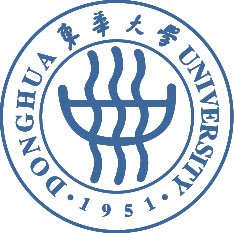1. 有机固废高值资源化-定向调控生物制备有机酸

Pilot-Scale Waste Activated Sludge Alkaline Fermentation, Fermentation Liquid Separation, and Application of Fermentation Liquid To Improve Biological Nutrient Removal. Environmental Science & Technology. 2011 45(5): 1834-1839;
Enhancement of propionic acid fraction in volatile fatty acids produced from sludge fermentation by the use of food waste and Propionibacterium acidipropionici. Water Research. 2013 47(2): 615-622;
Efficient production of optically pure L-lactic acid from food waste at ambient temperature by regulating key enzyme activity. Water Research. 2015 70: 148-157;
Improved production of propionic acid driven by hydrolyzed liquid containing high concentration of L-lactic acid from co-fermentation of food waste and sludge. Bioresource Technology. 2016 220: 523-529;
High-rate lactic acid production from food waste and waste activated sludge via interactive control of pH adjustment and fermentation temperature. Chemical Engineering Journal. 2017 328: 197-206;
Enrichment of D-lactic acid from organic wastes catalyzed by zero-valent iron: an approach for sustainable lactate isomerization. Green Chemistry. 2017 19(4): 928-936, Front Cover);
Production of lactic acid from thermal pretreated food waste through the fermentation of waste activated sludge: Effects of substrate and thermal pretreatment temperature. Bioresource Technology. 2018 247: 890-896;
Copper (II) addition to accelerate lactic acid production from co-fermentation of food waste and waste activated sludge: Understanding of the corresponding metabolisms, microbial community and predictive functional profiling. Waste Management. 2018 76: 414-422;
Efficient bioconversion of organic wastes to high optical activity of L-lactic acid stimulated by cathode in mixed microbial consortium. Water Research. 2018 131: 1-10;
Ammonium Enhances Food Waste Fermentation to High-Value Optically Active L-Lactic acid. Acs Sustainable Chemistry & Engineering. 2020 8(1): 669-677;
Stabilizing lactate production through repeated batch fermentation of food waste and waste activated sludge. Bioresource Technology. 2020 300: 122709;
Salinity enhances high optically active L-lactate production from co-fermentation of food waste and waste activated sludge: Unveiling the response of microbial community shift and functional profiling. Bioresource Technology. 2021 319:124124;
Overcoming carboxylic acid inhibition by granular consortia in high-load liquefied food waste fermentation for efficient lactate accumulation, Journal of Cleaner Production, 2022, available online.
2. 内源前噬菌体的激活—靶向灭菌控膜

Bacterial Inactivation and Biofilm Disruption through Indigenous Prophage Activation Using Low-Intensity Cold Atmospheric Plasma,Environmental Science and Technology, 2022, 56, 12, 8920–8931;
3. 工业废水处理及有机(危险)废物减量化与资源化

Efficient organic pollutants removal from industrial paint wastewater plant employing Fenton with integration of oxic/hydrolysis acidification/oxic. Chemical Engineering Journal. 2018 332: 440-448;
Hazardous waste dewatering and dry mass reduction through hydrophobic modification by a facile one-pot, alkali-assisted hydrothermal reaction. Water Research. 2019 155: 225-232;
Enhanced degradation of glucocorticoids, a potential COVID-19 remedy, by co-fermentation of waste activated sludge and animal manure: The role of manure type and degradation mechanism. Environmental Research, 2021, 201:111488;
Transformation of polyvinyl chloride (PVC) into a versatile and efficient adsorbent of Cu(II) cations and Cr(VI) anions through hydrothermal treatment and sulfonation. Journal of Hazardous Materials, 2022, 423:126973;
Responses of Soil Fertility and Microbiomes of Atrazine Contaminated Soil to Remediation by Hydrochar and Persulfate. Journal of Hazardous Materials, 2022, 435 (5):128944;
